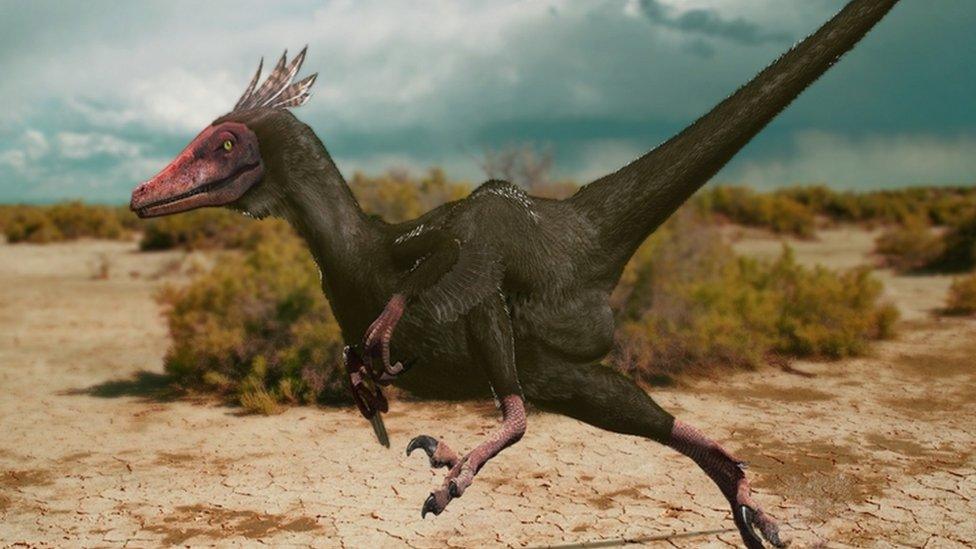Dinosaurs: Ancient relative of the velociraptor lived on the Isle of Wight
- Published
- comments

The new species is an ancient relative of the velociraptor
Scientists have discovered a bird-like dinosaur that is a relative of the velociraptor.
Palaeontologists found fossils on the Isle of Wight, which date back to over 100 million years ago.
The new animal has been named 'vectiraptor greeni', after local collector Mick Green, who discovered its bones after they washed up on rocks on the island's south coast.
The vectiraptor greeni was about the size of a wolf, around 3m long from nose to tail, and would use its huge talons on its feet and its jagged teeth to catch and eat its prey.
The dino would have roamed the forests in the Isle of Wight, 125 million years ago.
The fossils were discovered after storms and waves eroded away the rocks that had kept its bones hidden.
The Universities of Bath and Portsmouth studied the fossils and found that the bones were from a new species.
This was a large, and very heavily constructed animal. The bones are thick-walled and massive. It clearly didn't hunt small prey, but animals as large or larger than itself.
There were only some pieces of the skeleton that survived, but scientists think it suggests a large, powerfully built animal.
The new discovery had strong arms and talons so it may have climbed trees like modern leopards. The heavy bones suggest it relied on speed to tackle its prey.
The vectiraptor belonged to a group of dinosaurs called dromaeosaurs, or raptors. These bird-like dinosaurs were specialist hunters and covered in long feathers.
Other dinosaurs which were raptors include the velociraptor from Mongolia and the giant utahraptor from the United States.
This is the first time a large raptor has been found in the UK.
"There's an extraordinary diversity of dinosaurs known in England in the Cretaceous period, and even after more than a century of study, we continue to find new species," said Dr Longrich.
What do you think of this new dino discovery? let us know in the comments!
- Published11 November 2021
- Published26 June 2021
